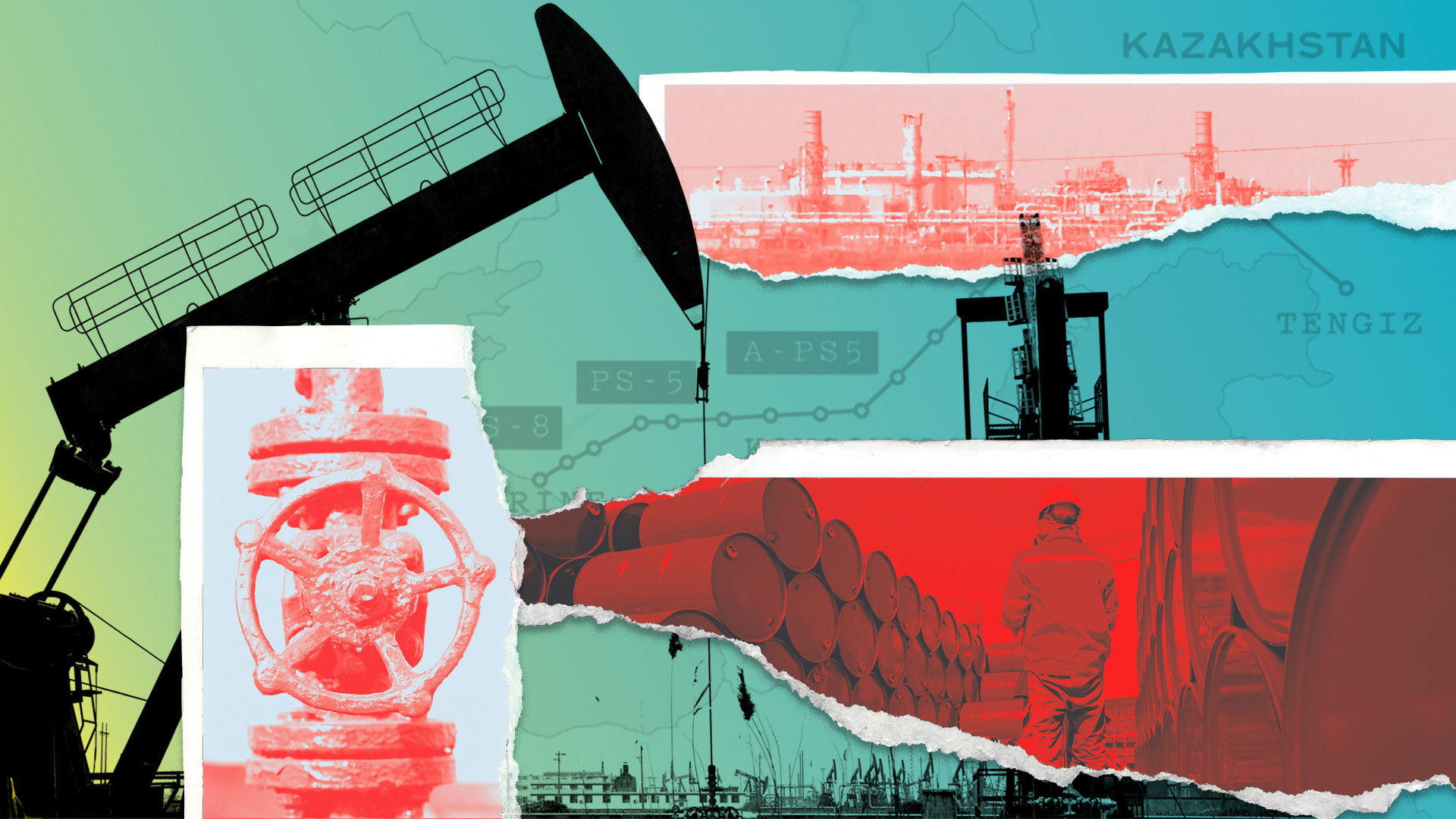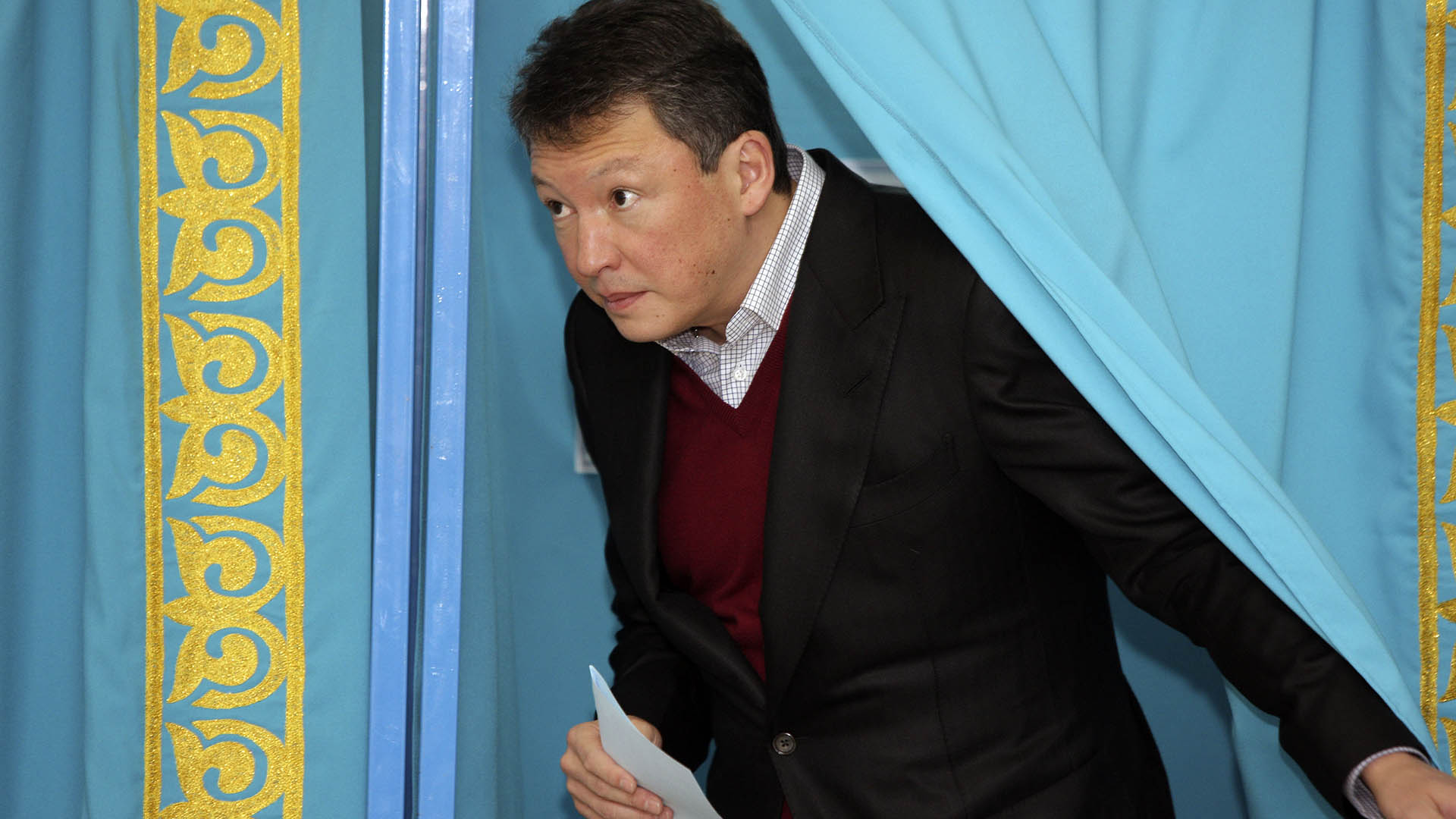
By the time I arrived in northwestern Kazakhstan, three of my interviews had been canceled, one of my interpreters had quit, and I had run out of cash (to the dismay of a hotel employee who was weighing whether to give me my room key or wait until I scurried back from an ATM).
I had been traveling through Kazakhstan for eight days, reporting on the oil and gas fields that feed the Caspian pipeline, a 939-mile oil transport route stretching from Kazakhstan to Russia. My research was part of a new ICIJ investigation, dubbed Caspian Cabals, which traces the role of the Western oil companies that own the pipeline and operate the fields in environmental devastation and alleged financial corruption.
Before I landed in Kazakhstan, I spent five months reading about the toll the oil and gas industry had taken on a small community in the northwest. Nearly a decade ago, the village, called Berezovka, had ceased to exist after a mysterious health crisis in the local school. On a single day, about 20 children and a handful of teachers became dizzy, lost consciousness or suffered seizures. Villagers blamed toxic emissions from Karachaganak, a nearby oil and gas field operated by Shell, Eni, Chevron, Russia’s Lukoil and Kazakhstan’s state oil company KazMunayGas.
In response to questions, a spokesperson from the joint venture of oil companies, Karachaganak Petroleum Operating (KPO), said that Kazakh authorities had “excluded any involvement of the KPO consortium into the intoxications of children and adults in the former Berezovka village.”
But residents and activists doubted those findings. By 2017, the Kazakh government had relocated all of Berezovka’s roughly 1,300 residents to surrounding communities, and by 2022, the oil companies had begun to bulldoze the village itself, with all its homes, farmland, and school and community buildings. But reading old news reports and parsing Russian- and Kazakh-language videos in my office in ICIJ’s Washington headquarters 5,000 miles away could only take me so far. To really understand how the Berezovites were affected, I needed to go there.

When I finally got to the hotel in Uralsk, the closest major city to Berezovka and the last stop on my three-legged tour of the country, very little was going according to plan. I needed a new approach: I had to scrap my itinerary and do some good old-fashioned door-knocking and cross my fingers that someone would answer. So I — along with a reporter and videographer from ICIJ’s media partner Radio Free Europe/Radio Liberty, a local driver and a (new) interpreter — piled into a small minivan headed toward what remained of Berezovka and the surrounding communities, armed with our notebooks, a camera and the hope that we could land a powerful story on the final days of our trip.
Araltal
Our first stop was Araltal, a small town where many former Berezovites were resettled. The road to Araltal was a bumpy one. For three hours, we zigged and zagged to avoid massive potholes and to dodge wild cattle and horses, past swaths of the Kazakh steppe. When we got to town, we hobbled out of the car, our heads throbbing from the trip, and were greeted by a row of identical red-brick houses.

We didn’t have any interviews scheduled; we didn’t even know if anyone would be home, so we just knocked on the first door we found. A woman answered and told us that she used to live in Berezovka but, startled by our camera and notebooks, refused to talk with us for more than a few minutes. She told us to try her friend, Vera Voskoboy, and waved us in her direction. But we were met with another disappointment: Vera didn’t answer her door … that is, not until we asked her neighbor to give her a call. Soon enough, a woman in a frayed dress and green headscarf opened the door and excitedly invited us in. She had a warm countenance, gold teeth and was missing a finger on her right hand. Flanked by potato plants, she agreed to an interview in her backyard garden.
Vera quickly dove into memories of her granddaughter, who first fainted at the village school 10 years ago and has had regular fainting episodes since then. Vera believed her illness was a result of Karachaganak’s emissions. “She was shaking so much,” she said with tears in her eyes, describing the first time her granddaughter had a seizure. “God forbid you should see it.” The story was distressing, but I was also overcome by a different feeling: that Vera had been waiting for someone to knock on her door and ask her to tell it.
Berezovka
Heartened by Vera’s willingness to chat with us, we hopped back into the car and moved on to Berezovka to see the abandoned community. We spent nearly an hour there, snapping photos of eerie scenes: A pile of wood that used to be a home. A horse’s corpse. A set of animal’s teeth.

As we wormed our way through the abandoned village, we were stopped by a KPO employee. He wore a hard hat, sunglasses and a bandana around his mouth. The outfit made him nearly incognito. “You’re not allowed to be here,” he said in Russian. “The land belongs to KPO.”
My Kazakhstani colleague, well-versed in the local laws, challenged him, saying it was perfectly legal for people to drive through the area.
But he persisted. “Just leave.”
After a five-minute back and forth, we departed so as not to escalate an already tense situation. But as we drove away, the worker tailed us in a white sedan. We pulled over, and my Russian-speaking colleagues confronted him with a microphone and camera. He vehemently swatted the camera away, refusing to explain why he had followed us. It was clear that the oil consortium wasn’t interested in having journalists poke around.
Eventually, he drove away and left us alone.
Zhanatalap
It was a trip of many firsts: my first time in Central Asia, my first time standing on the edge of an oil and gas field, and my first time having a traditional Kazakh meal.
Our final visit that day was about an hour from Berezovka, where we stumbled upon an elderly couple eager to explain how emissions from Karachaganak had affected them. After the interview, they insisted we join them for lunch, so we took off our shoes at the door and followed them to a red rug in their living room, where they served us sheep’s fat, apples and eggs; homemade sour cream, a popular Kazakh grain called talkan and several cups of tea. While we ate, they told us about their struggles, not the least of which is that they don’t receive enough assistance from the foreign oil companies that have damaged their environment. At times, they said, their water is oily and their air is unbreathable.

Our stomachs full, we said our goodbyes. I was glad I had scrapped my itinerary that day. That’s not to say everything went perfectly after that. We still had to endure a traffic stop for speeding, an uncomfortably long passport inspection and one too many glasses of sour camel’s milk.
But I felt a sense of relief. As I shook the couple’s hands, the Kazakh way — my second hand on top — they told me to visit again.
“We’re so excited a journalist from Washington came to see us,” the woman said.








